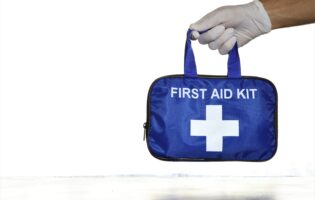Human history is a testament to our resilience and adaptability, with tales of survival against overwhelming odds. But when calamity strikes, it’s not just sheer will that makes the difference; it’s also our preparation. A survival kit is the epitome of foresight, a collection of essential items that can be the bridge between life and death in emergency situations. This detailed guide delves into the essentials of survival kits and their indispensable role.
The Philosophy Behind Survival Kits
The primary goal of a survival kit is to sustain life until rescue or self-recovery is possible. It is designed to address the core principles of survival: protection, location, water, and food.

Essential Components of a Survival Kit
- Protection:
- Shelter: Compact emergency tents or space blankets to retain body heat.
- Fire: Waterproof matches, lighters, or fire starters.
- Clothing: Spare socks, gloves, and thermal headgear.
- Location:
- Signaling Devices: Whistles, flares, and signal mirrors.
- Light: Flashlights with extra batteries or glow sticks.
- Communication: Emergency radios or satellite phones.
- Water:
- Purification: Water purification tablets or portable filters.
- Storage: Collapsible water containers.
- Food:
- Non-Perishable Items: Energy bars, canned sardines, or freeze-dried meals.
- Hunting & Fishing: Compact fishing kits, snare wire, or sling shots.
- First-Aid:
- Essential for managing injuries. Should include bandages, antiseptics, pain relievers, and specific personal medications.
- Navigation:
- Tools: Compass, GPS devices, and maps.
- Knowledge: Understanding basic navigation skills is invaluable.
- Multipurpose Tools:
- Knives: A good-quality knife is essential for multiple tasks.
- Paracord: Useful for setting up shelter, among other things.
- Personal Documents:
- Photocopies of identification, medical insurance, and other crucial papers sealed in a waterproof bag.
Tailoring to Your Environment
Survival kits should be customized based on the environment:
- Desert: Emphasize on sun protection and water storage.
- Mountainous Regions: Thermal protection and altitude sickness medications.
- Forests: Emphasize on insect repellents and navigation tools.
Maintenance and Updates
Regularly check and update your kit:
- Replace expired items.
- Adapt to changing personal needs, such as medications.
- Rotate food items to ensure freshness.
The Ultimate Insurance Against the Unknown
In a world increasingly prone to natural disasters, geopolitical tensions, and unforeseen calamities, a survival kit isn’t just a bag of tools—it’s peace of mind. It’s the quiet acknowledgment that while we cannot predict the future, we can prepare for its uncertainties. Whether you’re an adventurer, a traveler, or just a cautious citizen, a survival kit is a tangible manifestation of the age-old adage: “Hope for the best, but prepare for the worst.” In embracing this wisdom, we not only increase our chances of survival but also empower ourselves to face the unknown with confidence.















